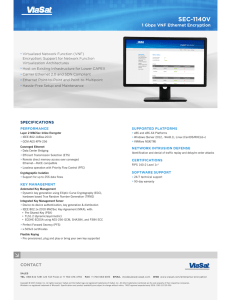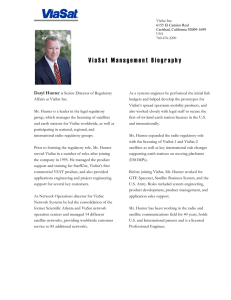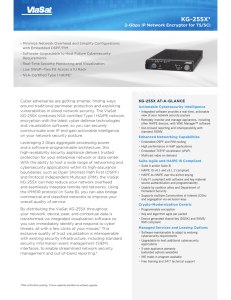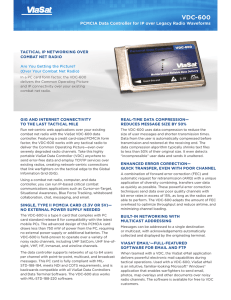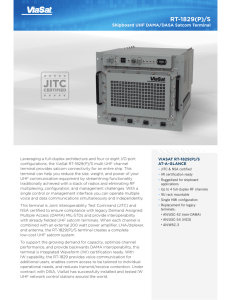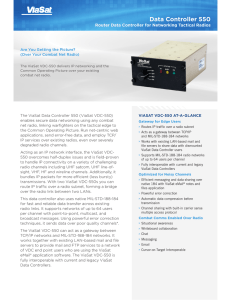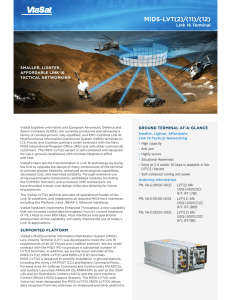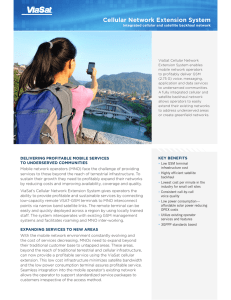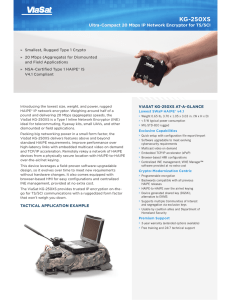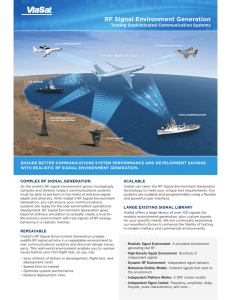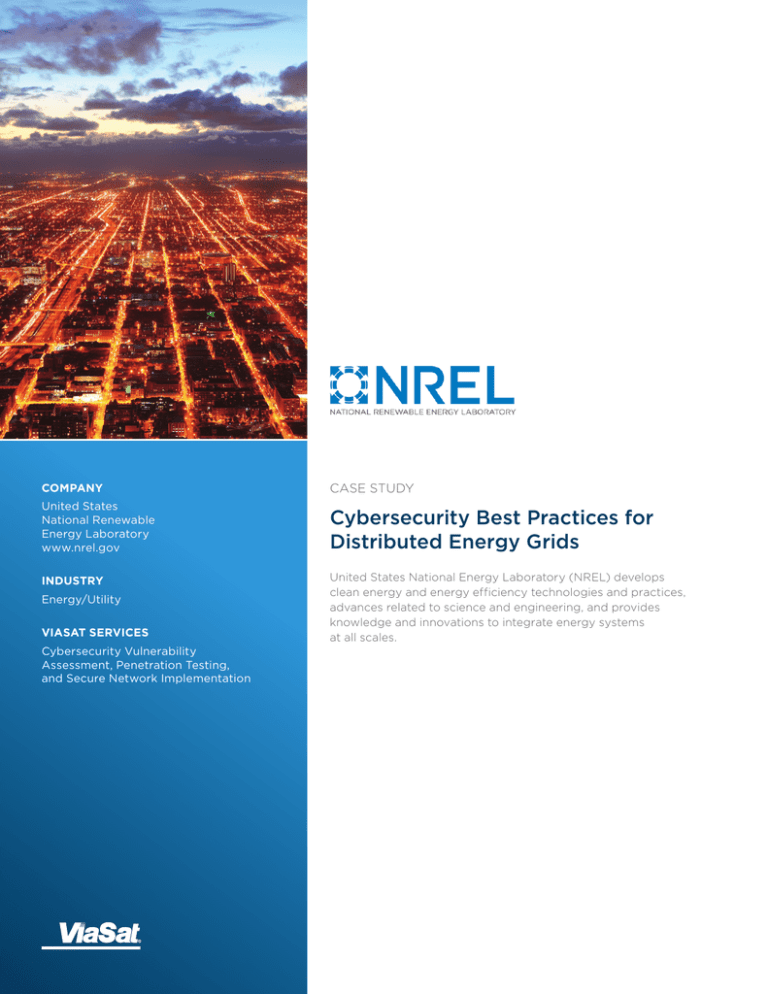
COMPANY
CASE STUDY
United States
National Renewable
Energy Laboratory
www.nrel.gov
Cybersecurity Best Practices for
Distributed Energy Grids
INDUSTRY
United States National Energy Laboratory (NREL) develops
clean energy and energy efficiency technologies and practices,
advances related to science and engineering, and provides
knowledge and innovations to integrate energy systems
at all scales.
Energy/Utility
VIASAT SERVICES
Cybersecurity Vulnerability
Assessment, Penetration Testing,
and Secure Network Implementation
The Challenge
The introduction of new technologies like smart meters and
renewable energy resources has required the energy grid to move
from a centralized topology to one that is highly distributed. As
a result, new security vulnerabilities have surfaced. Until now,
industry collaboration on how to address the cybersecurity and
resilience requirements of distribution grid management (DGM),
the part of the grid that carries power from substations to homes
and businesses, has been very limited due to varying regulatory
environments, strict NDAs, and budget constraints. To thoroughly
test the effectiveness of common security controls and establish
baseline standards that could be shared throughout the industry,
NREL created an end-to-end DGM system test bed leveraging a
bottom-up network security approach. Provided with real energy
system use cases, ViaSat was tasked with penetrating the test bed
security and helping remediate critical vulnerabilities.
The Solution
Gather
Information
Map Out
Threats
1
2
Analyze
Vulnerabilities
3
Exploit
Vulnerabilities
4
Detailed
Report/
Remediate
5
Throughout the course of a few weeks, ViaSat leveraged the above
process to thoroughly test, assess, and help improve the DGM
system cybersecurity.
During the first phase, IT security proved strong, but a
misconfigured management port on the operational technology
(OT) network created a significant vulnerability. ViaSat was able
to penetrate one of the cybersecurity technologies through
a misconfigured management port, enabling them to assume
administrator rights and ultimately disrupt the entire DGM
functionality by simulating a Distributed Denial of Service (DDoS)
attack through the compromised device.
Prior to the second phase of testing, ViaSat helped NREL
re-build the test bed based on a secure IP addressing scheme
that reinforced the existing layered defense approach. The
additional system hardening successfully protected the test bed
system, as no vulnerabilities were uncovered in the second round
of penetration testing. NREL’s DGM 2.0 test bed system proved
capable of withstanding multiple exploits throughout successive
layers of security, keeping critical energy control system assets
protected.
Benefits
With support from ViaSat and a handful of other partners, NREL
has empirically validated an end-to-end cybersecurity architecture
for distributed grid management. Individual energy utilities can
use this architecture to improve distribution system resiliency and
better protect against internal and external cybersecurity threats
of any level of severity.
CONTACT
SALES
TEL +1 760 476 4755 EMAIL insidesales@viasat.com WEB www.viasat.com/cyber-services
Copyright © 2016 ViaSat, Inc. All rights reserved. ViaSat and the ViaSat logo are registered trademarks of ViaSat, Inc. All other trademarks mentioned
are the sole property of their respective companies. NREL is a national laboratory of the U.S. Department of Energy, Office of Energy Efficiency and
Renewable Energy, operated by the Alliance for Sustainable Energy, LLC. 160111-005
“The ViaSat project
team demonstrated
superior skills in network
design implementation,
penetration testing, and
technical report writing.
The strong collaborative
spirit of its experts enabled
the timely completion of a
high-value project on time
and on budget.”
—Dr. Erfan Ibrahim, Center Director
for Cyber-Physical Systems Security &
Resilience at NREL

